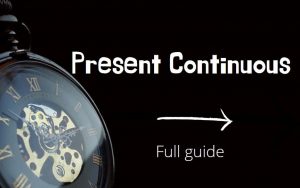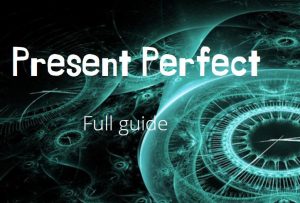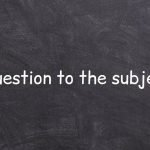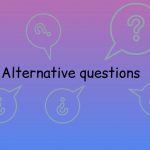We can form the future using four main future tenses:
- Future Simple
- Future Continuous
- Future Perfect
- Future Perfect Continuous
However in English, we also often use the Present Continuous for the future.
Of course, usually, we use the Present Continuous when we talk about what is happening at the moment.
I am reading a book.
But in some cases, we use Present Continuous when we talk about the future.
Planned future
We use Present Continuous when we talk about events in the future if these events are planned and we are sure that they will happen.
Be careful, because it really should be something planned. Organized. Appointed. In this case, we have no doubts that the event will happen.
John is watching this movie at the cinema.
It means that John has planned this early and John has no doubts that he will watch the movie at the cinema.
This does not mean that John is just thinking about the possibility of going to the cinema tomorrow. This means that John has no doubts that he will do it. He planned this in advance. He chose the film that he will watch. He bought a movie ticket.
Jessica is visiting her grandmother on Wednesday.
This does not mean that Jessica is just expecting to visit her grandmother. This means that Jessica has no doubt that this will happen. Jessica did her best to make it happen. Jessica’s grandmother is waiting for her. Jessica will definitely be at her grandmother’s on Wednesday.
How to form sentences in Present Continuous for Future
To form such sentences we use all the rules of the Present Continuous.
For this we need:
- Subject.
- The right form of the verb to be (am, is, are).
- The main verb with the -ing ending.
A positive sentence:
Subject (I, he, dog, people, John) + to be (am, is, are) + the main verb with the -ing ending (reading, walking, playing) + the rest of the sentence.
I am meeting him next Friday.
A question sentence:
to be (am, is, are) + subject (I, he, dog, people, John) + the main verb with the -ing ending (reading, walking, playing) + the rest of the sentence.
Are we meeting Uncle John today?
A negative sentence:
Subject (I, he, dog, people, John) + to be (am, is, are) + not + the main verb with the -ing ending (reading, walking, playing) + the rest of the sentence.
I am not visiting her this morning.
You can read all rules and examples about how we use the Present Continuous in the main article.
Examples of how we use Present Continuous for future
Take a look at the examples of The Present Continuous when we talk about the future.
Remember that in all of these examples, we convey full confidence that these actions will definitely happen. These are not assumptions. These are clearly planned actions.
I am spending Christmas with my sister in the country.
We are meeting Uncle John today.
Simon is coming to town.
We are coming to Paris soon.
Tomorrow, father and mother are coming to Seoul.
I am spending the next weekend with my daughter.
We are meeting him at 4:00 in Rhode Island.
You can also read about another interesting way how we can talk about the future using the Present Simple.
Hello! If you would like to thank me for the articles I wrote, you can click Buy me a coffee. Thank you! ❤❤❤










